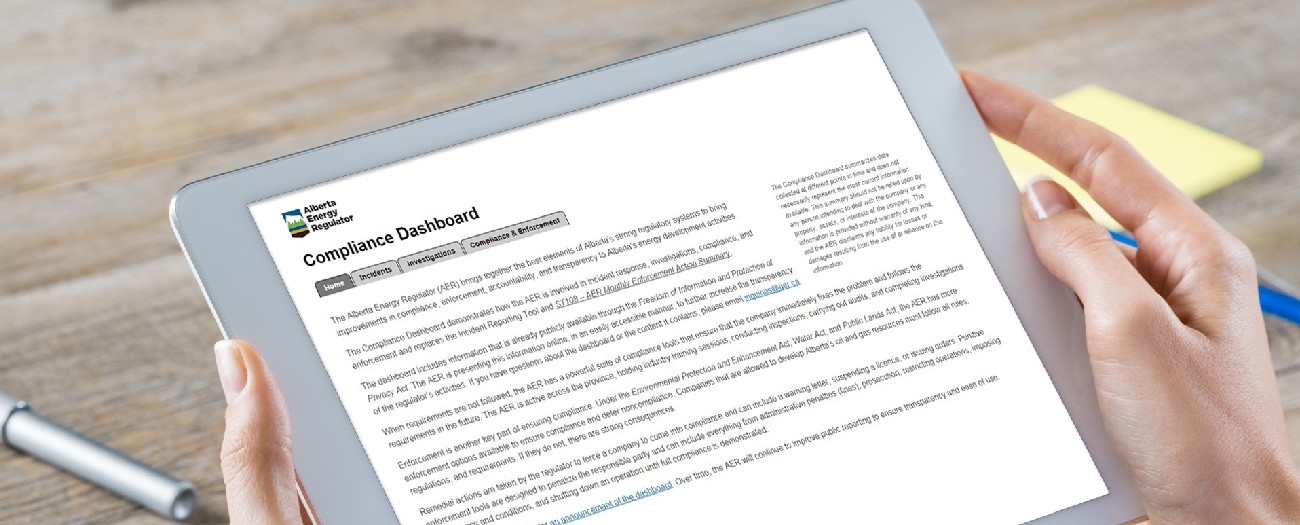Regulating an industry is about more than having tough rules in place; it’s also about communicating how those rules are being enforced.
The AER’s compliance dashboard aims to do just that. Created in 2015, it paints a picture of how the AER regulates oil and gas development and enforces our requirements.
As the AER’s president and chief executive officer, Jim Ellis, described at the time: “We wanted this information online—easy to access, easy to read, easy to search. It’s a spotlight, not just on industry, but on the AER as well.”
Below are five things to know about the compliance dashboard:
- Incidents. The dashboard lists incidents that have been reported since the AER was created in June 2013.
- Investigations. The AER carries out investigations to determine all of the facts necessary to come to an enforcement decision and works hard to ensure that this process is timely, fair, and transparent.
- Compliance and enforcement. The dashboard highlights the noncompliances that might affect public safety, the environment, and resource conservation.
- Easier access. The tool includes information that was already publicly available through the Freedom of Information and Protection of Privacy Act process, but in a form that’s more easily available to everyone and that improves how we communicate about our activities to hold industry accountable.
- Following up. The AER conducts thousands of compliance activities— including education, prevention, and enforcement—each year. This includes following up when companies fail to conduct instrument tests regularly, don’t accurately measure flare-gas volumes, or fail to talk to local authorities for planning purposes.
John Ludwick, Writer


